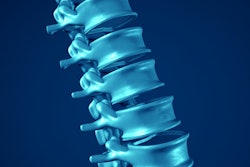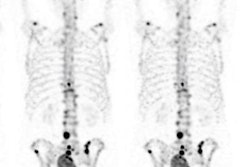
Radiologists in England facing a backlog of bone scan procedures for prostate cancer patients have developed a strategy for optimizing appointments that can significantly increase capacity, according to a study presented recently at RSNA 2022 in Chicago.
In a quality improvement session, Dr. Meedya Sharifpour of University Hospitals of Leicester discussed an approach for increasing imaging capacity by optimizing patient appointments based on risk. Depending on whether patients have had a prior CT scan, many appointment times can be cut by half, he said.
"Increasing capacity by 100% on some days was achieved by solely booking patients with recent prior CT imaging and reduced all appointment times in these patients from 60 minutes to 30 minutes," Sharifpour noted.
Bone scans are an essential part of prostate cancer imaging to detect lesions that may have spread to bone. These scans are performed typically using planar scintigraphy, with more accurate SPECT/CT added to clarify areas of concern. The COVID-19 pandemic resulted in a significant backlog of these scans in cancer patients and demand for imaging has increased as routine services have been reinstated during the post-pandemic phase, Sharifpour said.
Thus, the group sought to identify ways to increase bone scan capacity by optimizing patient appointment times.
The researchers conducted a 12-month review of bone scans at their hospital using planar scintigraphy and SPECT/CT. Each planar scan commonly takes 30 minutes and the addition of additional body parts for SPECT/CT imaging adds 15 minutes. Thus, all appointments on the books were allocated 60 minutes per patient in case a two body-part SPECT/CT scan was needed.
"However, this was not always needed, and gaps were commonly seen between patients being scanned," he said.
Over the period, 53% of patients required only planar imaging for diagnostic purposes and therefore only needed a 30-minute appointment. The researchers also noted that 24% of the patients needed an additional one body-part SPECT/CT (45-minute appointment) scan and 23% of the patients needed a two body-part SPECT/CT (60-minute appointment) scan.
Importantly, they also found that no patients who had a prior diagnostic CT scan performed within four weeks of the bone scan required any SPECT/CT imaging, unless a lesion was identified on the prior scan that needed characterization, Sharifpour said.
Based on the findings, the group began booking patients with prior CT scans for 30-minute appointments rather than the full 60-minute slot, and thus reduced their bone scan waiting list.
"This has resulted in an increase of between 20% to 100% capacity in bone scan imaging within our department," he said.
Sharifpour noted that radiologists do not commonly get involved in how appointments are allocated to patients, yet the study demonstrates their background clinical knowledge can help in risk stratifying patients and therefore help optimize services.
"Other imaging pathways are also getting reviewed for optimization," Sharifpour concluded.





















